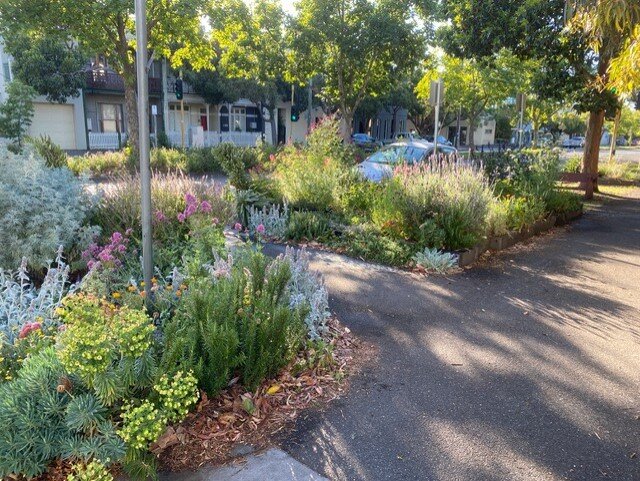RMIT researchers call on Melburnians to plant the right plants and create the right homes for native pollinators.
They say we’ll get better tomato crops, more flowers and boost urban biodiversity.
As Melbourne’s gardens burst into life after a wet spring, native insects are out looking for flowers and pollen. City gardeners rely on bees, butterflies and other insects to pollinate their plants, which is how flowering plants reproduce and grow fruit or seeds.
But city gardens often don’t have the right types of food and homes for these helpful native bees and flies, with knock-on effects for our gardens and for biodiversity. Urban ecologist Katherine Berthon from RMIT University found that only 43% of flowers in the Melbourne city gardens she studied were being used by bees and other pollinating insects.
“Native bees, wasps, butterflies and other insects need food and shelter to make a life for themselves in the city but, just like us, they have preferences,” says Katherine, a PhD researcher with the Interdisciplinary Conservation Science Research Group (ICON Science) at RMIT.
“Some are really picky while others are more open-minded, so we have to provide the right flower buffet and nesting materials to encourage them to move in.”
Katherine’s research looks at urban gardens across the City of Melbourne, including the Royal Botanical Gardens and the Australian Native Garden in Royal Park, to see which plants are preferred by the native bees and honeybees, hover flies and butterflies, ants and wasps which call the city home.
Some of the most insect-friendly gardens are next to a park in South Melbourne off busy Moray St: the BEE Gardens, part of The Heart Gardening Project, a community initiative led by Emma Cutting.
“We’ve turned this space from a barren pollinator dead zone into a space that buzzes, wriggles and flourishes with all sorts of critters, like bees, birds, dragonflies and even lizards,” says Emma. “Native bees are absolutely vital to urban areas – they pollinate not only our native flora but also our veggies.”
These gardens are part of the Melbourne Pollinator Corridor, which will be an 8km community-led wildlife corridor linking the Royal Botanic Gardens to Westgate Park, welcoming native bees and other pollinating insects to travel through these urban and industrial areas.

For home gardeners, the key is to plant flowers with a variety of shapes and colours, and to work with neighbours to create your own bee-friendly neighbourhood. Native insects prefer native flowers, especially local ones: native blue bells, daisies, and even trees like eucalypts are favourites.
“From the perspective of a little insect that doesn’t travel very far, an urban garden can be like a whole city,” says Katherine. “Even small garden spaces can offer really important homes and habitat, but good connections between gardens will really help our native insects thrive.”
Katherine Berthon was a part of Fresh Science 2021, a program supporting early career researchers to bring their work to the public.

